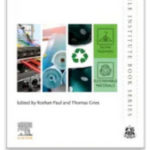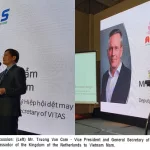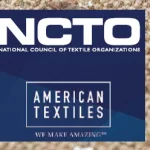 “Resource Efficiency” is relatively a new term coined in order to modernize the expression of combined savings achievable in various types of inputs that go into the manufacturing and other businesses. Earlier we used to talk about energy saving, water saving, raw material saving, effluent control by reducing BOD/COD, solid waste etc. The results used to be expressed individually and in terms of the overall economic savings. The stress also used to be there to avoid the use of hazardous chemicals. Perhaps the whole exercise used to be comparatively simple and easy to understand by all the stakeholders.
“Resource Efficiency” is relatively a new term coined in order to modernize the expression of combined savings achievable in various types of inputs that go into the manufacturing and other businesses. Earlier we used to talk about energy saving, water saving, raw material saving, effluent control by reducing BOD/COD, solid waste etc. The results used to be expressed individually and in terms of the overall economic savings. The stress also used to be there to avoid the use of hazardous chemicals. Perhaps the whole exercise used to be comparatively simple and easy to understand by all the stakeholders.
Our memory of a large number of Handbooks of Best Practices made available to industry sectors is still fresh in our minds. These immensely valuable publications (an outcome of cost saving techniques compiled from practical shop floor trials) are gathering dust in libraries, both public and private. Most of solutions provided in these practical studies require quite a nominal investment and are still relevant for adaptation by the industry sectors.
Resource Efficiency means creating more (economic) value with less input of resources (taking the broad resource scope including raw materials, energy, water, air, land, soil, and ecosystem services, as adopted by both, UNEP’s International Resource Panel and the European Commission in its recent Roadmap to a Resource Efficient Europe) and reducing the environmental impacts associated with resource use to break the link between economic growth and the use of nature. Therefore, improving the resource efficiency of SMEs offers enormous potential for reducing production cost and increasing productivity while, at the same time, making a significant contribution to addressing environmental challenges. So-called circular economy enhances resource and cost savings by maximizing the time that resources, products and components are used.
As we are associated with the textile and allied industries, we know fully well the importance of adapting the best practices made available to us decades ago in the form of Handbooks. All this knowledge has now been repackaged as “Resource Efficiency” teaching us how to make judicious use of raw materials, water, energy and fuel and reduce air and water pollution. Water usage is now called Water Footprint. Similarly, we have Energy Footprint, Carbon Footprint. All the technical, financial, personnel, administrative, regulatory, non-/governmental and almost all the related issues have been clubbed together to evolve a modern system of Greenhouse Gases/Climate Change and what not!
While SMEs are trying to understand their various footprints, policy makers are busy making complex norms and reports that is helping mushrooming growth of new professional tribes who are making money while on-job training to learn these new regulatory requirements and their compliance.
Isn’t it strange that the international community is unable to stop small wars in which thousands of innocent lives are being lost? Can we expect them that they will save the earth with climate control?
GD Jasuja
Managing Editor





